Contents
Sanjusangen-do Temple
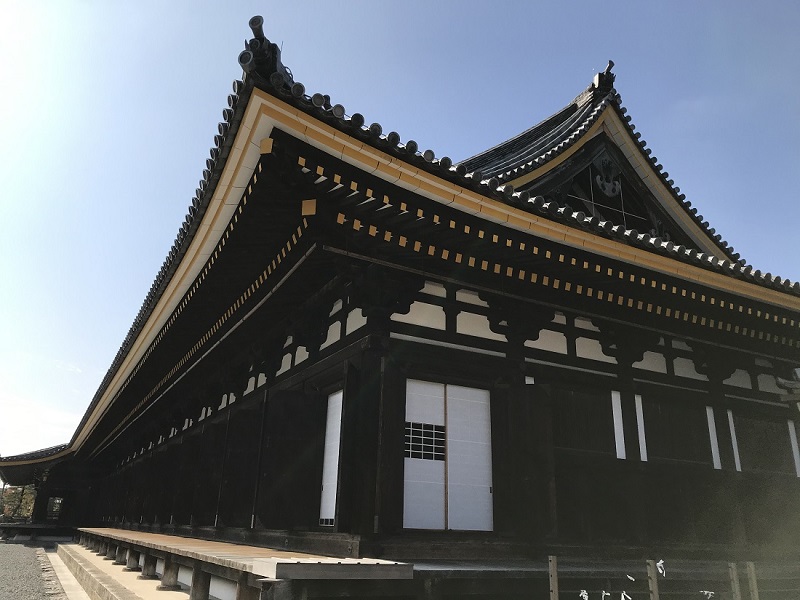
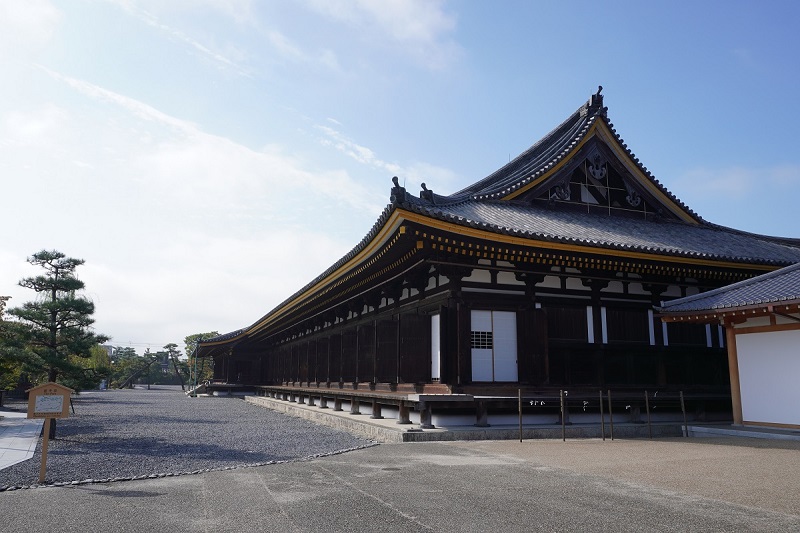
ーYou can see the splendid view. The 1001 statues of Senju Kannon with different facial expression fills the vast hall in an orderly manner.ー
Sanjusangen-do Temple is a Buddhist temple built by Taira no Kiyomori in 1164 as the order of Emperor Go-Shirakawa in a corner of Hoju-ji Temple, the Emperor’s villa. The official name is Rengeo-in Temple. At the time of its construction, a five-storied pagoda was built, but it was destroyed by fire. After that, only the main hall was rebuilt in 1266. The reason why it is called “Sanjusangen-do” (sanjusan means 33 in Japanese) is that there are 33 pillars in the main hall. The main hall is 120 meters long and is the longest wooden building in Japan and is a national treasure.
National treasure, Senju Kannon sitting statues
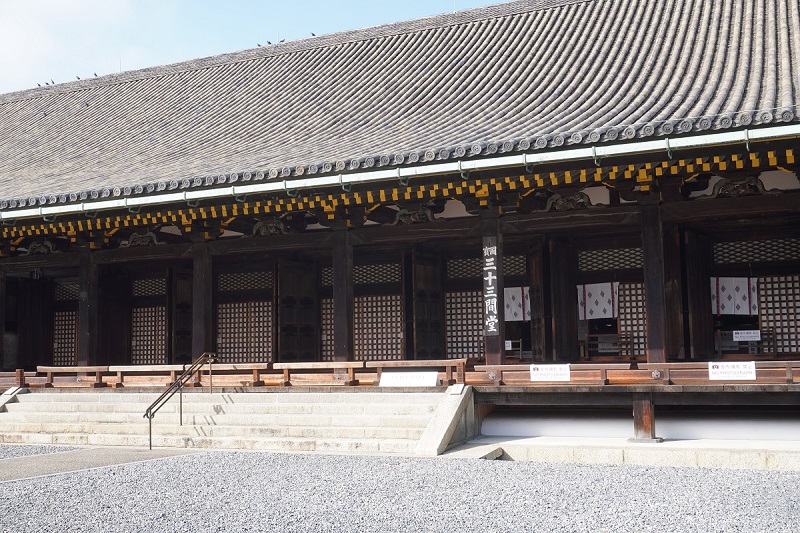
In the main hall, A magnificent view of the seated Statue of Senju Kannon in the center of the hall and 1000 life-sized standing statues of Senju Kannon on the left and right lined up. The seated Statue of Senju Kannon was completed during the Kamakura period when the temple was rebuilt, and 124 out of a thousand were made during the Heian period when the temple was first built, and the others were made during the Kamakura period. In the front row, there are powerful statues of national treasure such as the guardian wind god and thunder god statue. It’s an overwhelming sight. I’m sorry I couldn’t post the image because photography is prohibited in the hall.
Long-range archery : Tohshiya
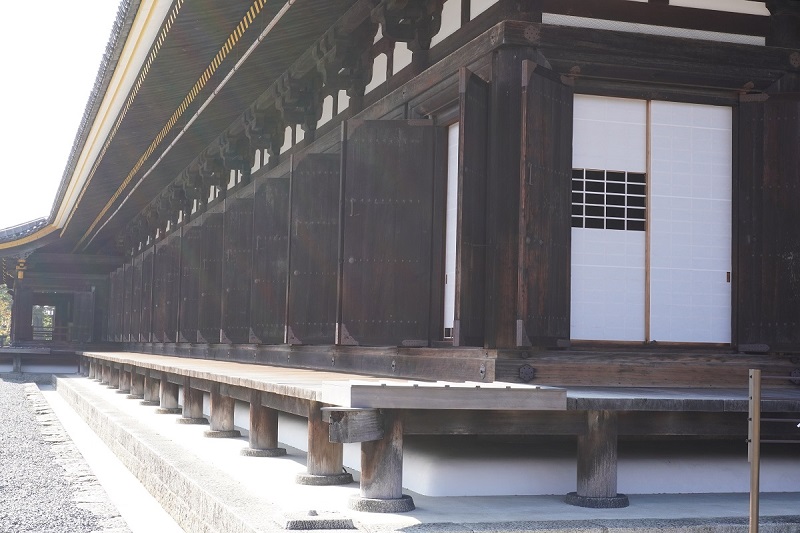
In the Edo period, “Toh-shiya” which shoots an arrow to 120m ahead was performed under the eaves of the main hall, and archers were competing for their skills. Currently, every New Year, the “Sanjusangen-do Grand Tournament” is held, and shoot an arrow from a distance of 60m at a special space instead of under the eaves. It has become a tradition of the New Year in Kyoto.
Pond garden : Chisen Garden
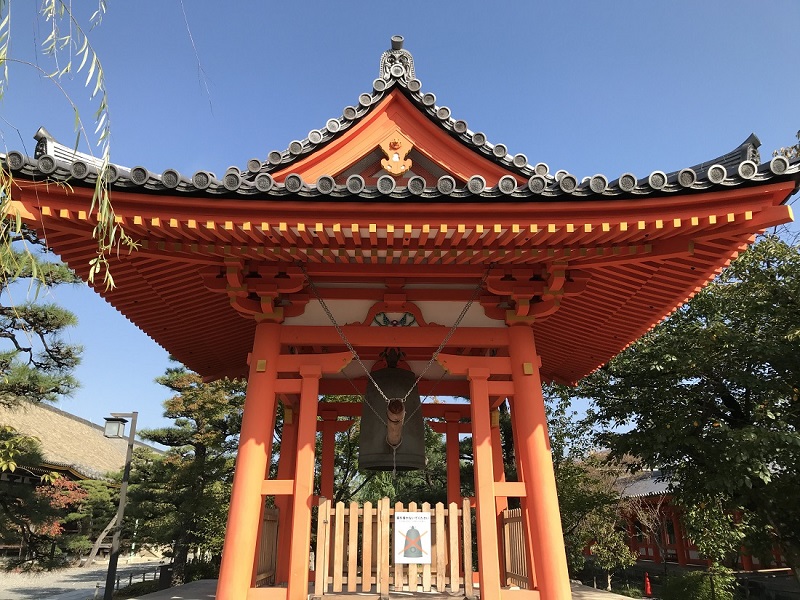
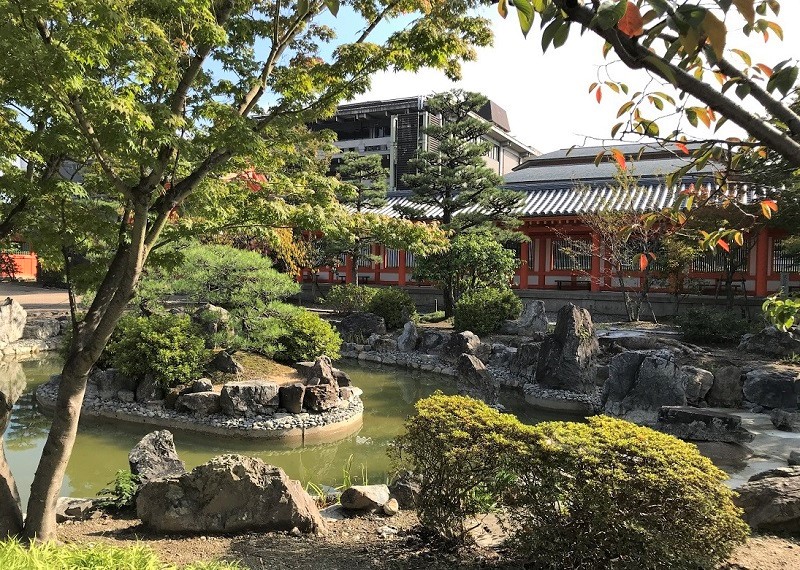
This garden is a healing place created based on the landscaping method of the Kamakura period. You can take a closer look from the promenade. In spring, azaleas bloom beautifully and decorate the garden.
Natural Spring for Worshippers : YONAKI-Sen
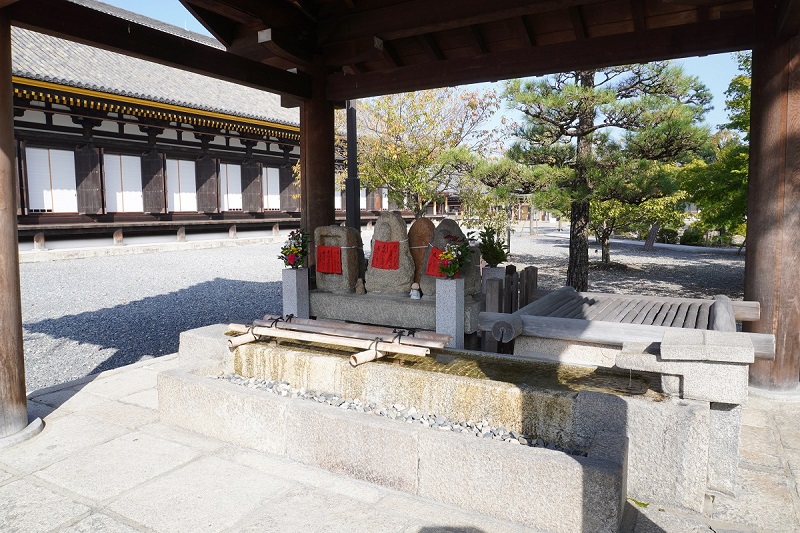
It is a sacred spring discovered in 1165. It came to be called “Yonaki-sen” because the sound of water coming out at night resembles “crying”. Jizo, guardian diety of children, are enshrined next to the well, and it is said that Jizo has the benefit of healing infants’ night crying. Some people come to pray for that benefit.
Inari-sha shrine
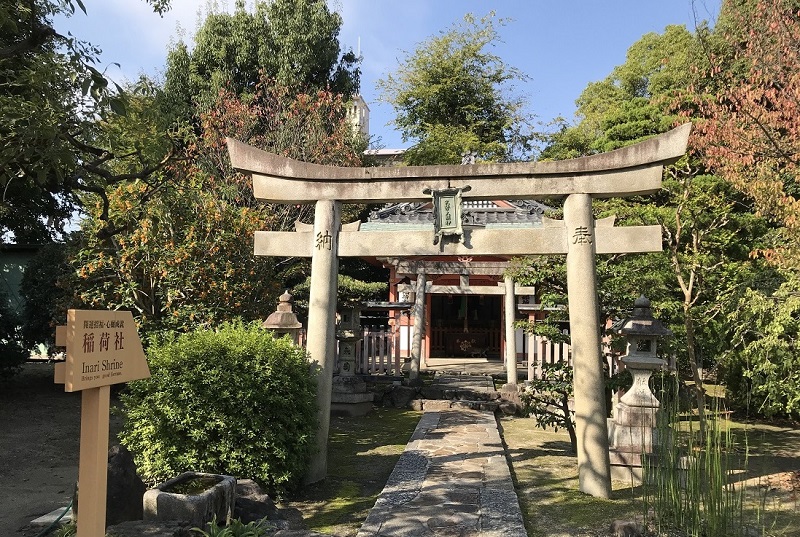
There is the Inari-sha shrine called “Kuze Inari Daimyojin” in the precincts. There is a benefit of good luck.
Access
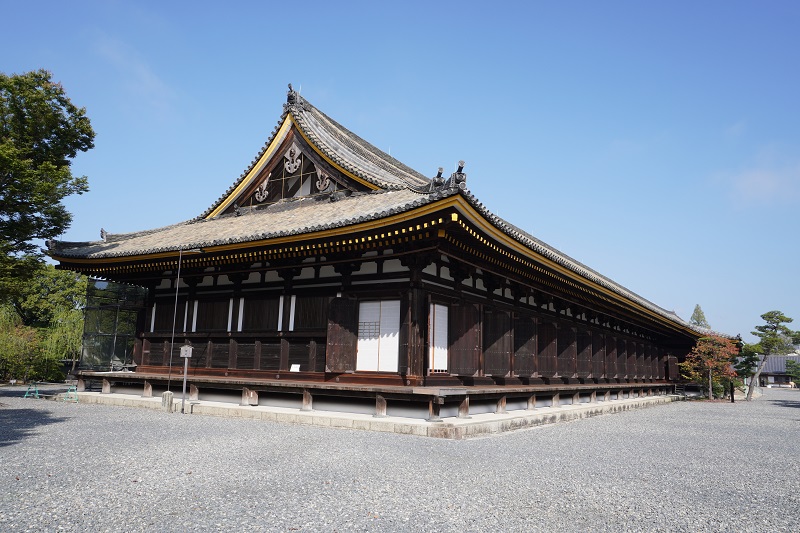
It is a short distance from the city bus stop “museum Sanjusangen-do”.
open 8:00-17:00 (9:00-16:00 from November 16th to the end of March)
Click here for information of Yogenin Temple.
Click here for information of Chishaku-in Temple.
Click here about shops around here.